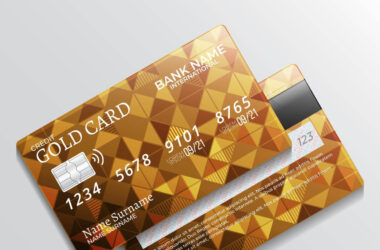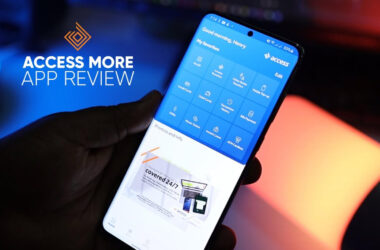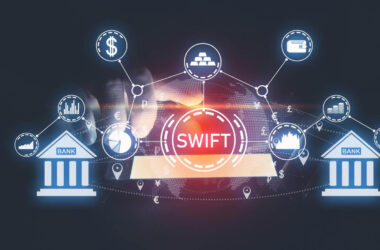In today’s digital age, banking, and financial transactions have become more convenient, fast, and easy with the help of online and mobile banking. However, these advancements have also led to an increase in fraudulent activities, making it necessary to have additional layers of security in place to protect against unauthorized transactions.
One such security measure is the Card Verification Value (CVV), which is a three or four-digit security code that is printed on the back of most credit and debit cards. The CVV is designed to help prevent fraudulent transactions when the card is used for online or telephone purchases.
The concept of CVV dates back to the late 1990s when it was introduced by credit card companies as an additional security feature to help prevent card fraud. Since then, it has become a standard feature on most credit and debit cards issued by banks across the world.
The importance of CVV in banking cannot be overstated as it provides an added layer of protection for both the cardholder and the bank against fraud. In this article, we will explore what CVV is, its brief history in banking, and why it is important in today’s banking transactions.
What Does CVV Stand For?
CVV stands for “Card Verification Value,” while CVC stands for “Card Verification Code.” Both are security codes printed on the back of most credit and debit cards, but there is a slight difference between them.
CVV is a three or four-digit code that is typically printed on the back of the card, usually near the signature panel. It is used as an additional layer of security to help prevent fraudulent transactions when the card is used for online or telephone purchases.
CVC, on the other hand, is a three-digit code that is typically found on the back of American Express cards, while some other card issuers may use the term “CID” or “Card Identification Number” instead. CVC is also used as an additional layer of security to help prevent fraudulent transactions.
Both CVV and CVC are similar in that they are used to verify that the cardholder is in possession of the card and to prevent fraudulent transactions. However, the main difference between them is that CVV is used by most card issuers, while CVC is used only by American Express.
It is important to note that neither CVV nor CVC should be confused with the PIN (Personal Identification Number) used for ATM transactions. The PIN is a four or six-digit number used to authenticate the cardholder during ATM transactions, while CVV and CVC are used to verify the card’s authenticity during online or telephone purchases.
Where is CVV Located on the Credit/Debit Card?
The location of the CVV on a credit or debit card depends on the type of card being used. Generally, CVV is located on the back of the card, near the signature panel. However, the specific location of the CVV may vary depending on the issuer of the card.
For Visa, Mastercard, and Discover credit or debit cards, the CVV is typically a three-digit code located on the back of the card, in the signature panel area. The CVV is printed in a different font than the rest of the card number and is usually the last three digits in the signature panel.
For American Express credit or debit cards, the CVV is a four-digit code located on the front of the card, above the card number. Unlike other card issuers, American Express prints the CVV on the front of the card, making it more accessible and easier to read.
Cardholders can keep their CVV secure by never writing it down, never sharing it with anyone, and only using it during secure and legitimate transactions. Additionally, cardholders should regularly monitor their credit and debit card statements to detect any unauthorized transactions that may occur. If a cardholder suspects fraud or unauthorized use of their card, they should contact their bank immediately to report the issue and get help resolving it.
What is the Purpose of CVV in Banking?
The primary purpose of CVV in banking is to provide an additional layer of security to prevent fraudulent transactions. CVV is designed to protect against unauthorized use of a credit or debit card during online or telephone transactions, where the cardholder is not physically present.
CVV helps protect against fraudulent transactions in several ways. First, it confirms that the cardholder has physical possession of the card when making a purchase. Second, it verifies that the card number provided during the transaction is genuine and has not been copied or stolen. Finally, it makes it more difficult for scammers and fraudsters to make unauthorized purchases, as they would need to obtain both the card number and the CVV to complete a transaction.
How to Keep Your CVV Secure?
Keeping your CVV secure is crucial to preventing fraudulent transactions and protecting your finances. Here are some tips for keeping your CVV secure:
- Never share your CVV with anyone: The CVV is a crucial security feature that should only be used during transactions. Do not share your CVV with anyone, including family members or friends.
- Memorize your CVV: It is essential to memorize your CVV rather than writing it down or saving it on your computer or phone. If you must write it down, keep it in a secure location, such as a locked safe.
- Beware of phishing scams: Scammers may try to trick you into sharing your CVV by posing as your bank or credit card company. Be cautious of any unsolicited emails, text messages, or phone calls that request your CVV.
- Use secure websites: Only enter your CVV on secure websites that use encryption to protect your personal information. Look for the padlock icon in the address bar and make sure the website address starts with “https.”
- Regularly monitor your account: Keep an eye on your credit and debit card statements to detect any unauthorized transactions that may occur. Report any suspicious activity to your bank immediately.
Access Cards
Access Bank offers different types of cards to its customers, including credit, debit, and prepaid cards. These cards can be used for various transactions across multiple channels, such as ATMs, point-of-sale terminals, internet, mobile, and telephone orders. Access Bank issues its cards under major card schemes such as Visa, MasterCard, and Verve.
The Visa credit card is a dual currency-denominated payment card that allows you to spend and settle in naira for domestic transactions, while all international transactions are billed and settled in US dollars. You also have the option to settle your dollar spend/bills in Naira, subject to prevailing exchange control regulations. With the Visa credit card, you can enjoy an interest-free period of up to 40 days, and Verified by Visa (VbyV) additional security for online transactions.
The Naira credit card is a Naira-denominated credit card that is accepted at over 2 million ATMs and 30 million merchant locations, across over 220 countries globally. You can enjoy an interest-free period of up to 40 days, Verified by Visa (VbyV) additional security for online transactions, and up to 50% of your net monthly salary can be availed as a credit limit. There is no collateral required for salaried employees, and the minimum monthly repayment is 15% of the outstanding balance.
Access Prepaid is a reloadable payment card product that can be funded and used for transactions across multiple channels, i.e., ATM, point of sale terminals, internet, mobile, and telephone orders. Access Prepaid cards are issued to both individuals and corporates and are available in Visa, Verve, and MasterCard variants.
The CVV for Access Bank cards can be found on the back of the card, on the signature panel. It is a three-digit number for Visa and MasterCard and a four-digit number for Verve. It is important to keep your CVV secure and not share it with anyone, as it is a critical security feature that protects against fraudulent transactions.
Conclusion
CVV (Card Verification Value) is a three or four-digit code printed on credit and debit cards used to verify the legitimacy of a card during online, telephone, and mail transactions. The CVV serves as an additional layer of security to prevent fraudulent transactions, and it is essential to keep it secure by not sharing it with anyone.
The importance of CVV in banking cannot be overstated as it protects both the cardholder and the bank from fraud. With the increasing reliance on electronic transactions, CVV has become a crucial component of financial security. It is advisable to take necessary measures to keep the CVV safe and secure, such as not writing it down or sharing it with anyone.











3
Looking for the real GoPlus777 site? Found it. goplus777 is the place to be. Enjoy the games and good luck mga boss!
Wim222… name’s catchy, I’ll give them that. Standard stuff overall but hey, options are good. Try it, maybe you’ll dig it! wim222
Hey everyone! I’ve been playing around on phpgames31, and it’s got some interesting stuff. A little bit of everything, really. Give it a browse and see if anything catches your eye. phpgames31
Checked out jljl63. Could be better, could be worse. Your call if you wanna try it: jljl63
Hey, x555game looks like fun! I hope it’s filled with awesome games! Checking this place out for cool game updates. Explore the games on x555game
So convenient having 74betapp on my phone. Makes placing bets on the go a breeze. Get the app here 74betapp.
Just checking out rumislotsgame – thinking about spinning some virtual reels later. Anybody had any luck there? Gotta love a good slots session! Get spinning with rumislotsgame!
Hello! Do you use Twitter? I’d like to follow you if that would be okay. I’m undoubtedly enjoying your blog and look forward to new updates.